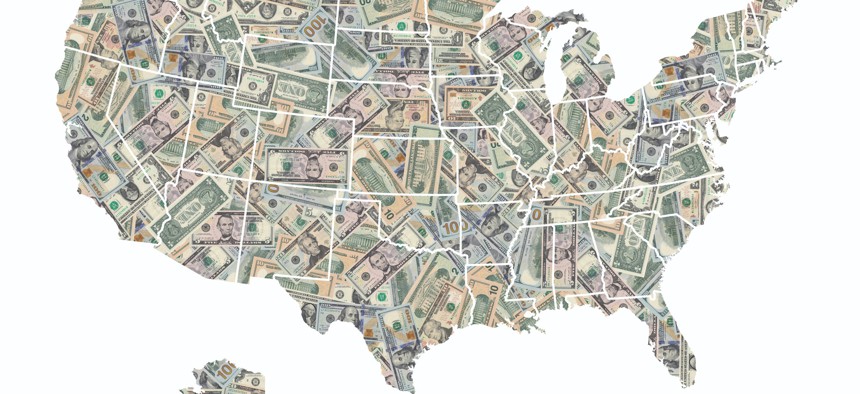Which States Have the Lowest and Highest Tax Burdens?

ISTOCK.COM/udmurd_PL
The state with the largest total tax burden has more than double the smallest, a new ranking finds, but there is great variation in tax collection throughout the states.
New York ranks as the highest tax-burden state, where residents pay 12.79% annually of their personal income to state and local taxes. That’s more than two times the lowest tax burden state, Alaska (5.10%), according to a report released by WalletHub, a personal finance website.
Tax burden measures the proportion of total personal income that residents pay toward state and local taxes. According to WalletHub, it is not uniform across the U.S.
To determine its rankings, WalletHub compared the 50 states based on the three components of state tax burden — property taxes, individual income taxes and sales and excise taxes — as a share of total personal income. The data used to create the ranking were collected from the Tax Policy Center.
Overall, New York, Hawaii, Vermont, Maine and Connecticut had the highest total tax burden based on state and local taxes, and New Hampshire, Delaware, Wyoming, Tennessee and Alaska had the lowest.
When it comes to the states with the highest individual income tax as a percent of total income, New York, Oregon, Maryland, California and Minnesota lead the way. Alaska, Florida, South Dakota, Texas and Washington were the lowest for individual income taxes.
Meanwhile, New Hampshire, Vermont, Maine, New Jersey and Rhode Island had the highest property tax burden. Alabama, Oklahoma, Tennessee, Delaware and Arkansas are the five states that had the lowest property tax burden as a percentage of income.
Residents of Hawaii, Nevada, Washington, Louisiana and Arkansas pay the largest percentage of their personal income in total sales and excise tax compared to those in Alaska, Montana, Delaware, Oregon and New Hampshire, who pay the lowest.
The survey also found that states that voted for a higher percentage of Republican lawmakers in the 2020 election cycle have lower tax burdens compared to those states that voted for more Democrats.
The report was released as states are developing their annual budgets to determine how to best recover after the devastating economic effects of the Covid-19 pandemic. Yet, there is a wide variety of approaches each state will take to solve these issues.
To see more about these findings and view where your state ranks on the list click here.
Brent Woodie is an associate editor at Route Fifty.
NEXT STORY: AI analysis speeds FDA drug reviews





